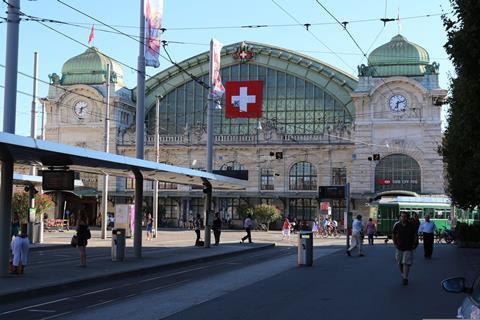
SWITZERLAND: The Ministry of Transport has set out details of plans to enhance or rebuild key sections of the national rail network under legislation due to be passed in 2026 that will define further stages in the national long-term railway investment programme.
Under the proposals announced on February 28, examination of the initial stages of five major projects would be incorporated into the 2026 legislation which forms an essential step towards the Ausbauschritt 2035 rail investment programme.
The five projects are: remodelling of the rail hubs in Luzern and Basel; upgrading or new line construction between Bern and Lausanne; upgrading or new line construction between Winterthur and St Gallen and between Zürich and Aarau.
The Zürich – Aarau scheme, for example, envisages construction of a 250 km/h double-track line, largely in tunnel, over the 30 km between Zürich-Altstetten and Rupperswil. Initially costed at SFr6bn and for use only by passenger trains, the line would offer a huge increase in capacity to relieve the existing route which currently handles around 370 trains a day.
Improvements are needed in the Bern – Lausanne and Winterthur – St Gallen corridors to reduce planned journey times to compensate for SBB’s abandonment last year of WAKO active suspension for its Twindexx double-deck electric multiple-units. The WAKO roll movement tilt system was intended to allow a 10% to 15% speed increase in curves and was expected to halve the cost of infrastructure improvements.
If the projects are to go ahead, they must all demonstrate a positive cost:benefit ratio and conform to the objectives of the Bahn 2050 programme, consultation on which began in June last year.
The 2026 legislation will also incorporate an updated version of the 2035 service concept. This envisages additional infrastructure work to ensure that trains can operate to the planned timings reliably and punctually ― SBB has advised that further measures will be needed if the proposed journey time cuts reductions are to be achieved.
SBB has also confirmed that delays to projects such as Phase 2 of the Zimmerberg base tunnel, the Brütterner tunnel and reconstruction of Zürich-Stadelhofen station will affect future planning for journey time reductions. As a result, further expansion or remodelling at key stations will be needed to absorb future growth and ensure reliable interchanges. Additional siding and maintenance capacity will also be needed.
All this will require the federal government to work closely with cantons and rail operators, as envisaged in the rolling planning process agreed in the FABI (Finanzierung und Ausbau der Bahninfrastruktur) proposals approved by referendum in 2014.

















